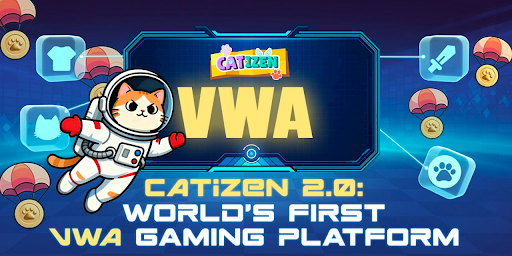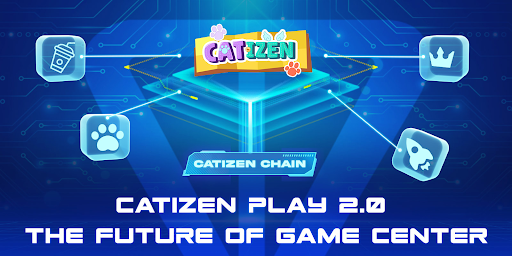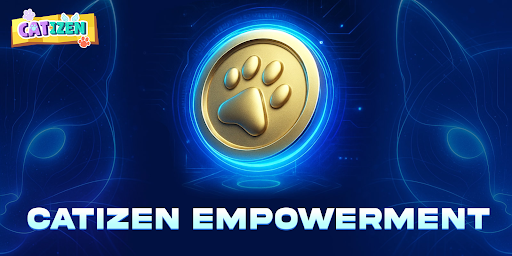This is not only an opportunity for Catizen but also a new chance for the entire GameFi industry.
As a leading gaming platform in the TON ecosystem, Catizen has built a vast ecosystem encompassing 63.4 million users. This number not only breaks through the limitations of traditional GameFi user circles but also represents a collective choice by global players for a truly decentralized gaming experience.

What is even more noteworthy is that the CATI token economic model has demonstrated outstanding market performance and practical value. As the first cat-themed token listed on Binance, $CATI reached a historical high of $1.29, with a market capitalization close to $1.3 billion. To date, over 52 million $CATI have been reclaimed on the platform, and more than 30.89 million $CATI have been distributed through a quarterly AirDrop Pass mechanism, forming a healthy token circulation mechanism. Behind these numbers lies a truly sustainable operational token economic system.
However, Catizen's success cannot mask the existential crisis facing the entire industry.
Industry Pain Points: Key Issues the GameFi Market Needs to Overcome
"The first half has ended: a rational return after the carnival"
According to the Gate Research 2024 GameFi market research report, the GameFi market presents a complex situation of growth and differentiation. Although the global market size has grown from $19.584 billion to $23.75 billion, with a compound annual growth rate of 28-29.5%, the expansion in scale hides a fatal quality crisis.
A year-end report from ChainPlay reveals a harsher reality: 93% of GameFi games have now perished, with an average lifespan of only 4 months for each game, and over 60% of users churn within the first month. The average ROI for the top 10 tokens in various tracks in 2024 is -10.59%. These alarming numbers not only reflect that the industry is undergoing a painful transition from speculation-driven to value-driven but also expose three key systemic flaws: lagging user experience design—complex operational processes and chaotic interface designs deter players; imbalanced economic incentive mechanisms—over-reliance on speculative short-term returns, lacking sustainable value creation models, leading to extremely short project lifecycles; insufficient integration of technological innovation—blockchain technology advantages have not been organically combined with game design, resulting in the inability to convert technological potential into user value.
The root of these problems lies in the fact that current GameFi games are essentially still confined to the Web2 gaming model—merely layering an airdrop mechanism on top of traditional games, rather than truly achieving deep integration with blockchain technology. In this pseudo-innovation model, player assets still lack true ownership, value creation remains monopolized by platforms, cross-game asset circulation is restricted, and the promise of a technological revolution ultimately becomes a castle in the air.

"Reconstructing digital asset ownership: a paradigm shift from centralized monopoly to player sovereignty"
Against this backdrop, Catizen is undertaking a significant initiative to change the industry landscape—building a dedicated gaming Layer2 for the TON ecosystem, known as Catizen Chain, allowing digital assets to truly belong to players. At the same time, it is launching Catizen Play 2.0, a super platform capable of hosting hundreds of games, enabling traditional games to easily go on-chain, where players can enjoy a genuine blockchain gaming experience and receive fair airdrops based on their contributions.
To understand why Catizen is initiating this technological revolution at the industry's most challenging moment, one must first delve into the fundamental flaws of the current gaming industry.
VWA (Virtual World Asset)
Fundamental Flaws of the Past Gaming Ecosystem
The core issues boil down to three: data black box operations, players lacking value returns, and items lacking real asset attributes. The fatal flaw of this model is that the time and money players invest can only yield temporary gaming experiences, failing to accumulate lasting value, let alone truly own any valuable assets.
Specifically, current game data is entirely controlled by the manufacturers: virtual items are just a piece of code on the server for users, and when the game shuts down, everything is lost; how the game operates and how it is updated are all decided by the developers, leaving players with no say; most critically, all the value created by players is monopolized by the platform, with no rightful returns. This exploitative model, where players pay while manufacturers take all the value, not only limits the manufacturers' own development potential but also continuously drains users' enthusiasm and trust, becoming the biggest obstacle to the sustainable development of the entire industry.
On-chain Rights Confirmation and Transparent Payments
The first VWA game that Catizen is about to launch will fundamentally change the relationship between players and game assets. By minting in-game items as on-chain assets, players will truly own virtual items for the first time—these assets will no longer be invisible and intangible data on a server but real digital property that can be verified, traded, and liquidated in their wallets. This fundamental transfer of ownership completely addresses the core pain points of traditional gaming.
On the payment front, players can directly use cryptocurrencies like USDT, TON, and CATI for payments, achieving on-chain automatic settlement with transaction fees close to zero, completely eliminating the friction costs of traditional payments; in terms of data transparency, players' recharge records, points generation, and token distribution are all stored on-chain, with decentralized storage via IPFS ensuring that data is always verifiable. Anyone can become a validator to participate in data verification and earn token rewards, forming a truly decentralized data governance system.
Building a Complete Value Closed-loop Ecosystem
More critically, VWA constructs a complete value closed-loop mechanism. Through a precise airdrop system that converts points to tokens, it truly achieves fair incentives based on actual contributions, allowing players to transition from mere consumers to co-creators and beneficiaries of ecological value. Users holding game tokens can vote on major game decisions, realizing true governance between players and development teams.
Game items are minted as on-chain assets using ERC-721/1155 standards, supporting free trading and providing creators with ongoing royalty income, endowing game items with real liquidity and long-term value. Through this revolutionary mechanism, players' gaming experiences evolve from one-time consumption to a sustainable value accumulation process, with each game session adding value to their digital asset portfolio.

Catizen Empowers VWA: Comprehensive Ecological Advantages
With a user base of 63.4 million and a mature token economic model, Catizen provides unparalleled ecological support for VWA games. $CATI is deeply integrated into the gaming economic system, usable for in-game payments and staking for gains, creating diversified application scenarios. The platform's massive user traffic offers a natural customer acquisition advantage for new games, while the excellent market performance of $CATI injects strong confidence support into the entire ecosystem. The synergistic effect of both will drive the first VWA game to achieve leapfrog growth. This deeply integrated ecological model lays the most solid foundation for the success of VWA games.
VWA Opens a New Era for Gaming
The winter of the GameFi industry is not an end but the eve of a new model's birth. At a critical moment when traditional models have reached a dead end, Catizen has chosen a more challenging yet promising path—through VWA technology and the Catizen Chain technology architecture, fundamentally redefining the relationship between players and games, assets, and value creation. This is not a simple technological upgrade but a complete reconstruction of value.
While other projects are still worrying about short-term fluctuations, Catizen has set its sights on a farther horizon. Through the organic combination of technological innovation, model innovation, and ecological innovation, Catizen is launching a true revolution in the GameFi industry, exploring a path of genuine sustainable development. History tells us that true legends often emerge in the most difficult times.
Legends in adversity often come from precise grasp of transformative opportunities and early layout of future trends. The story of Catizen is just beginning, and the VWA revolution it represents may very well become the decisive force driving the entire industry out of the trough and towards new heights. This is not only an opportunity for Catizen but also a new chance for the entire GameFi industry.
免责声明:本文章仅代表作者个人观点,不代表本平台的立场和观点。本文章仅供信息分享,不构成对任何人的任何投资建议。用户与作者之间的任何争议,与本平台无关。如网页中刊载的文章或图片涉及侵权,请提供相关的权利证明和身份证明发送邮件到support@aicoin.com,本平台相关工作人员将会进行核查。




